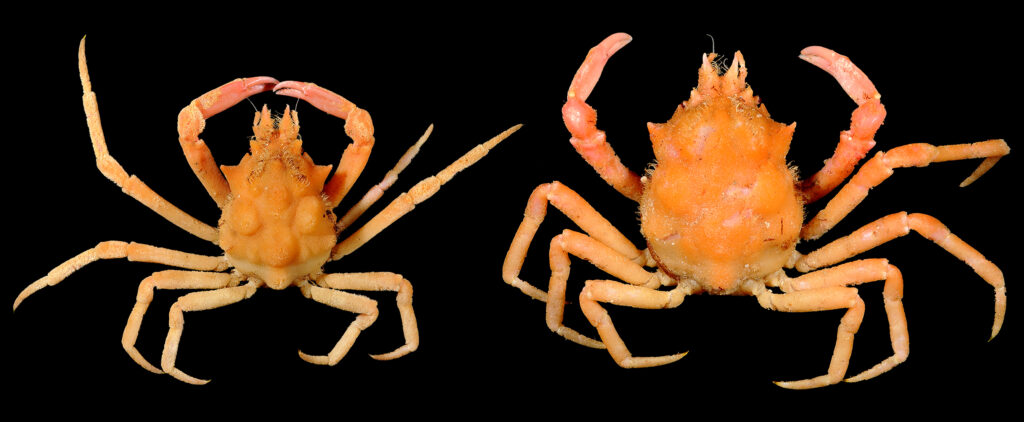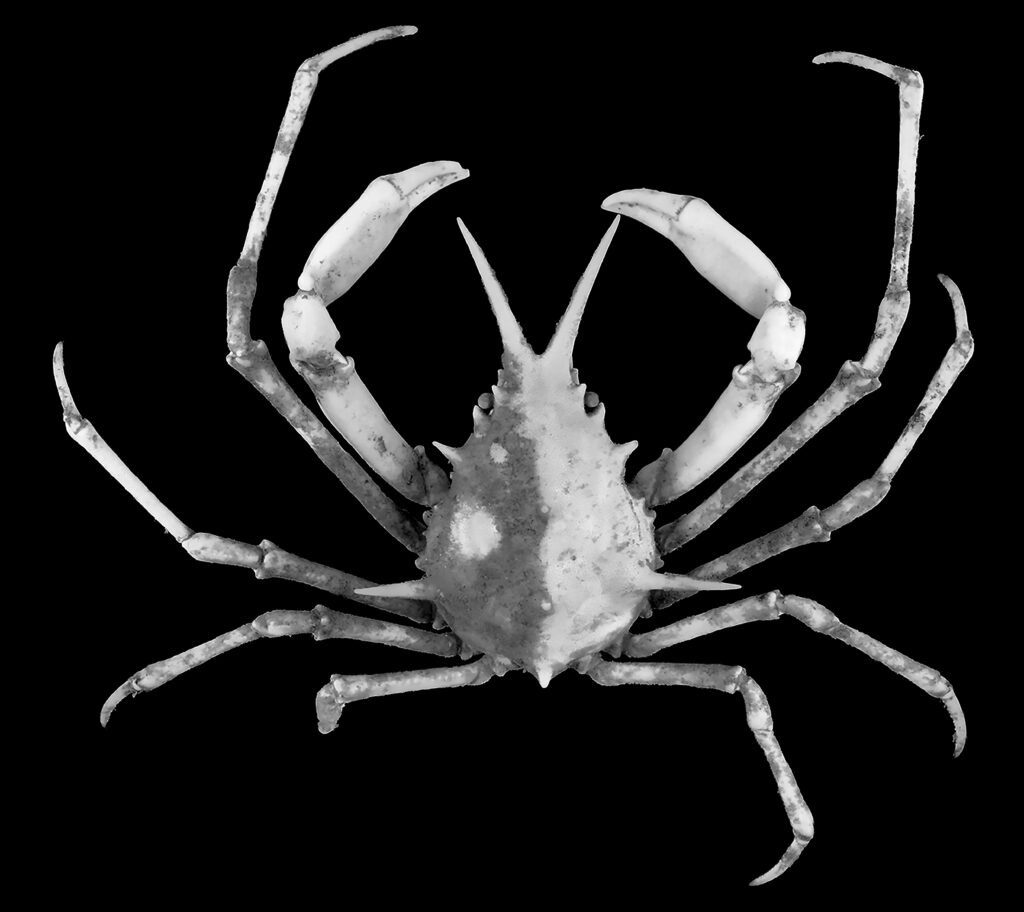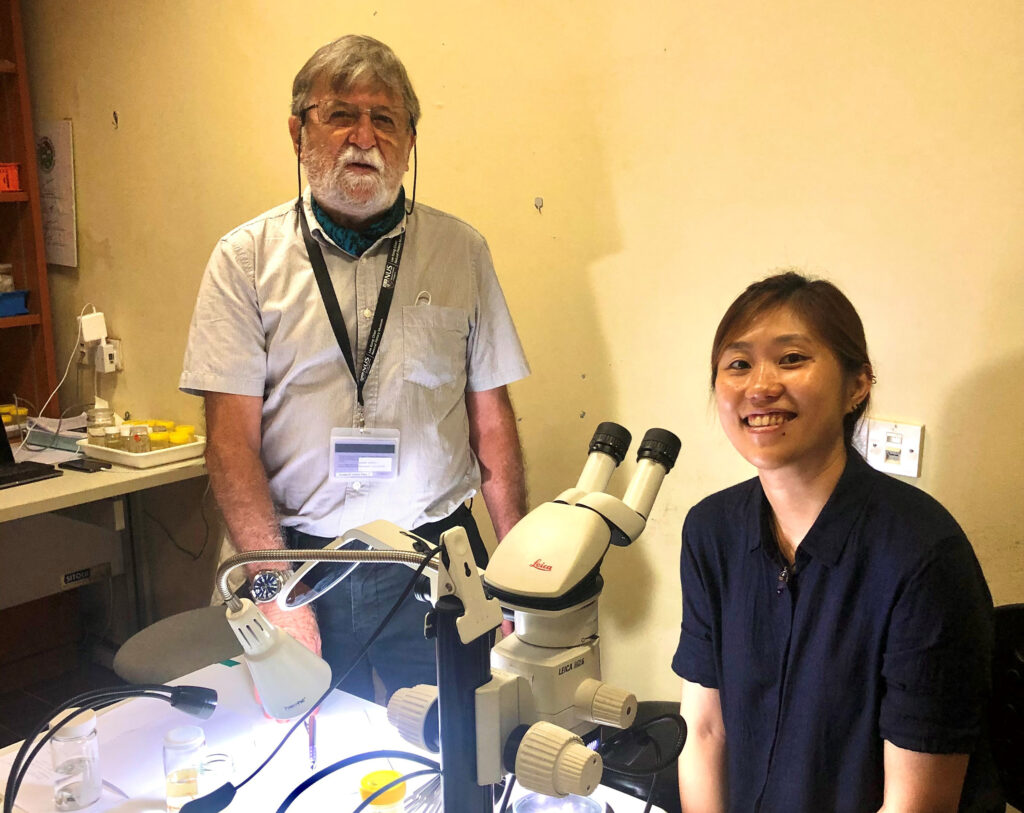New xanthid rock crabs and epialtid spider crabs featured in Tropical Deep-Sea Benthos
New ground is being broken in the field of crab research by Dr Jose Christopher Mendoza, Dr Lee Bee Yan, Dr Bertrand Richer de Forges and Prof Peter Ng! These culminated in the abundant discovery of various new species of xanthid rock crabs and epialtid spider crabs during a series of marine biodiversity expeditions in the Southwestern Indian Ocean from 2009 to 2017. Findings were published in the reputable French marine life journal, Tropical Deep-Sea Benthos (TDSB), successor of the MUSORSTOM series published by the MNHN Paris (under the Memoires du Musèum national d’Histoire naturelle).
New Riveting Rock Crabs
In a great feat of research, our Museum’s crustaceans curator, Dr Jose Christopher Mendoza, documented a whopping 73 species in total during these expeditions. Among them were an attractive array of five xanthid crabs previously unknown to science such as new species of Alainodaeus, Hepatoporus and Xanthias, as well as a new genus, Eurycassiope. Out of these, two new species were named in honour of the late Dr Alain Crosnier, who was instrumental in building MUSORSTOM and TDSB’s prestige and prominence today. This latest instalment of the TDSB (Vol. 33) was also informally known among editors and contributors as the “Alain Crosnier Volume”, a salute to a great man and scientist. In fact, back in 2013, Prof Peter Ng (former Head of LKCNHM), Dr Richer de Forges, and a few others wrote about the “Alain Crosnier Effect”, which described his infectious zeal for pushing carcinological and deep-sea research to new heights.

Eurycassiope alaini. This specimen from the Glorieuses Islands belongs to the new genus and species discovered by Dr Mendoza, and bears a species name in honour of Dr Crosnier. Prof Peter Ng also contributed to the overseeing of this research. (Image credit: MNHN/BIOMAGLO, 2017)

Alainodaeus crosnieri. For this new species from the Glorieuses Islands, both the genus and species are named after Dr Crosnier! (Image credit: MNHN/BIOMAGLO, 2017)

One can also feast their eyes on the remarkably spotted specimen, Xanthias claudiae. This striking crab from the Mozambique Channel is named after the late Madame Claude Crosnier, who was a supportive pillar of Dr Crosnier throughout his career. (Image credit: MNHN/MAINBAZA, 2009)

Top: Group photograph of carcinologists gathered together. All are members of a larger carcinologist research community founded by Dr Crosnier, affectionately known as “Crosnier’s Cronies”, who continue their work to this day across almost all continents and over a dozen countries. This photograph features researchers mentioned in this article—Dr Mendoza (second from left), Dr Crosnier (second from right), and Dr Richer de Forges (rightmost). Bottom: A selfie of Dr Crosnier and Dr Mendoza.
With their bold colours and striking patterns, the eccentric appearances of these rock crabs are not to be missed!
New names, new spider crabs, new stories!
Meanwhile, unprecedented epialtid crab species were also uncovered from the Western Indian Ocean by Dr Lee Bee Yan (a research fellow at the St. John’s Island National Marine Laboratory and previously a research assistant at the Museum) alongside Dr Bertrand Richer de Forges (a renowned marine biologist and friend of the Museum). They described six new species of spider crabs, including a new species of Crocydocinus and five new species of Samadinia. “The names of these crabs hold rich stories behind them,” as Dr Lee shared. For instance, C. claudiae’s name again commemorates Madame Claude, while S. sororia (in which ‘soror’is Latin for ‘sister’) pays tribute to the Beaudemoulin sisters from La Réunion Island who helped in the deep-sea expeditions for many years.

Crocydocinus claudiae is a new species discovered by Dr Lee and Dr Richer de Forges, also named after the late Madame Claude Crosnier. This spider crab research was also overseen with the help of Prof Peter Ng. (Image credit: MNHM/BIOMAGLO, 2017)

Samadinia sororia, another new species discovered by Dr Lee and Dr Richer de Forges, is named in honour of the Beaudemoulin sisters from La Réunion Island . (Image credit: MNHN/MIRIKY, 2009)

Dr Richer de Forges (left) and Dr Lee (right) pictured together amid their work.
This publication contributes to the journal’s never-ending endeavours in their exploration of the tropical deep-sea biodiversity in the Indo-West Pacific region. As evidenced by the specimens and stories above, the recent work celebrates not only the new crab genus and species, but also the relentless passion of the researchers behind them!
Special thanks to the MNHN Visiting Fellowship Programme
Over the years, LKCNHM and MNHN have nurtured close research ties with each other. These continue to be strengthened via programmes like the MNHN Visiting Fellowship, a tradition instituted by Dr Crosnier during his stint under the MUSORSTOM programme. It was this Visiting Fellowship that Dr Mendoza was invited by Dr Laure Corbari of MNHN to embark on his research visit to Paris in 2018. In return, LKCNHM’s own visiting fellowship programme has also allowed us to open our doors to host researchers affiliated with MNHN, such as Dr Richer de Forges. Such large projects would not have been achieved without this indispensable spirit of collaboration and mutual assistance, united by a love for research.

